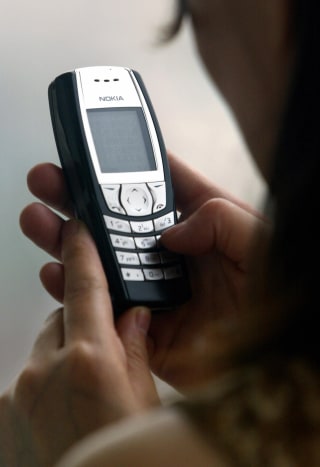
If you've been online at all in the last few days, you have no doubt seen the stories about how we would rather shock ourselves than be alone with our thoughts. The article below is from Today online, but there were also stories in The Guardian, Shocking but true: students prefer jolt of pain than being made to sit and think, Nature, We dislike being alone with our thoughts, and The Washington Post, Most men would rather shock themselves than be alone with their thoughts.
How seriously should we take this research?
Read the report on the study presented below. Then after that there is a critique of the study from Tom Stafford (University of Sheffield) at Mind Hacks.
To cut to the chase a bit, here is the main point Stafford makes:
What the result certainly doesn’t mean, despite the interpretation given by some people – including one author of the study – is that people don’t like thinking. Rather, it’s fair to say that people don’t like being forced to do nothing but think.Word.
Shocking study: People would rather jolt themselves than be alone with their thoughts
Judy McGuire | TODAY
July 3, 2014
Alone with my thoughts? Um, where's my phone? Some people would rather shock themselves than have quiet time. | FREDERIC J. BROWN / AFP/Getty Images
Maybe you can’t go to bed, or even the bathroom, without your phone. Or maybe you come home from work and immediately check email, turn on the TV or hit “play” on the stereo.
If you’re like most of us, you get—some might say, need—constant outside stimulation. Wouldn’t it be nice to have a moment alone with your thoughts?
Actually, maybe not. A study out Thursday from the University of Virginia found that many people are so uncomfortable with quiet contemplation that many of them – and especially men – would rather experience minor electrical shocks than spend time alone with their thoughts.
One of the researchers, psychology Professor Timothy D. Wilson, noted that while there had been many studies on how the mind wanders, most tested the brains of people reading books. He wondered what would happen when people had nothing to distract them from themselves. So he put his subjects in an otherwise empty room with nothing to read, look at or hear for six to 15 minutes.
The subjects—who were men and women ranging in age from 18 to 77—were nearly uniform in their intense discomfort. “Not everyone hated it,” Wilson says. But most did. So Wilson changed up the experiment and had people perform it at home, extracting promises that they would turn off their ringers, TVs and all electronic devices.
“They liked it even less,” he says. “In fact, many people told us they cheated.”
So Wilson and his team enlisted their colleague, Dr. James Coan, who had a lab equipped with a shock machine. “It’s nothing fancier than a box a box with a nine-volt battery in it,” Wilson explained, and it produces a mild shock about the same as a zap of static electricity.
Much to the researchers’ surprise, many of the participants preferred getting zapped to sitting quietly with their thoughts. “We put them in a room by themselves with an electrode attached to their ankle. They were told to spend their time entertaining themselves with their thoughts, but were also told they could give themselves a little shock if they wanted,” he said. A computer recorded whether or not participants shocked themselves and incredibly, 12 out of 18 males did so. “We had given them a sample shock earlier, so they knew what to expect.”
These results didn’t surprise New York City-based psychotherapist Teri Cole. “Being on social media all the time, having your phone be the first thing you do in the morning . . . people are endlessly self-soothing in the moment,” she said.
It certainly can be annoying to be out with a person who’s constantly checking their phone, but is there any real harm in it? Maybe. Psychotherapist Paula Carino considers alone time all important.
“It’s essential to our well-being because that quiet time is when we learn to tolerate difficult feelings and thoughts and learn that we don't have to be so reactive,” she said. Quiet moments can help us “become much more attuned to the beauty that's right here, rather than escaping into some dopamine-fueled fantasy world.”
Cole agrees. “Whether it’s a concert or an amazing meal—if you’re on your phone the whole time, will you have that same memory?” she asks. “It doesn’t just impact the moment itself, it impacts our ability to gain intelligence, to experience that things that change ourselves as humans. We’re diluting them—making them ‘experience-lite.’”
Wilson says his research into quiet time has many practical applications. “There are lots of times during our daily lives when we’re having to wait at DMV, or stuck in traffic, when would be a good thing to retreat into our own minds and not be stressed,” he says. “One of our goals is to teach people how to use this in their every day lives and enjoy it.”
How does Wilson suggest we learn to be one with ourselves? “Well, that’s the million-dollar question,” he says. “We’re testing the hypothesis that maybe it’s easier to do with a little bit of engagement, because people tell us that the times when they daydream is when they’re doing something else, like walking or driving.”
Cole and Carino recommend meditation for their clients, and indeed Wilson pointed out that research subjects who already practiced meditation had a much easier time with the experiment. Studies have shown that along with improving one’s powers of concentration, meditation also lowers blood pressure and revs up your immune system.
“This isn’t kumbaya,” laughs Cole. “It’s real.”
* * * * *
If nothing else, this explains why most people find meditation so excruciating. But Tom Stafford has a more educated and broader perspective to bring to this study.
Do we really hate thinking so much we’d electrocute ourselves rather than do it?
By Tom Stafford, University of Sheffield
The headlines
The Guardian: Shocking but true: students prefer jolt of pain than being made to sit and think
Nature: We dislike being alone with our thoughts
Washington Post: Most men would rather shock themselves than be alone with their thoughts
The story
Quiet contemplation is so awful that when deprived of the distractions of noise, crowds or smart phones, a bunch of students would rather give themselves electric shocks than sit and think.
What they actually did
Psychologists from the universities of Virginia and Harvard in the US carried out a series of 11 studies in which participants – including students and non-students – were left in an unadorned room for six to 15 minutes and asked to “spend time entertaining themselves with their thoughts.” Both groups, and men and women equally, were unable to enjoy this task. Most said they found it difficult to concentrate and that their minds wandered.
In one of the studies, participants were given the option to give themselves an electric shock, for no given reason or reward. Many did, including the majority of male participants, despite the fact that the vast majority of participants had previously rated the shocks as unpleasant and said they would pay to avoid them.
How plausible is this?
This is a clever, provocative piece of research. The results are almost certainly reliable; the authors, some of whom are extremely distinguished, discovered in the 11 studies the same basic effect – namely, that being asked to sit and think wasn’t enjoyable. The data from the studies is also freely available, so there’s no chance of statistical jiggery-pokery. This is a real effect. The questions, then, are over what exactly the finding means.
Tom’s take
Contrary to what some reporters have implied, this result isn’t just about students – non-students also found being made to sit and think aversive, and there were no differences in this with age. And it isn’t just about men – women generally found the experience as unpleasant. The key result is that being made to sit and think is unpleasant so let’s look at this first before thinking about the shocks.
The results fit with research on sensory deprivation from 50 years ago. Paradoxically, when there are no distractions people find it hard to concentrate. It seems that for most of us, most of the time, our minds need to receive stimulus, interact with the environment, or at least have a task to function enjoyably. Thinking is an active process which involves the world – a far cry from some ideals of “pure thought”.
What the result certainly doesn’t mean, despite the interpretation given by some people – including one author of the study – is that people don’t like thinking. Rather, it’s fair to say that people don’t like being forced to do nothing but think.
It’s possible that there is a White Bear Effect here – also known as the ironic process theory. Famously, if you’re told to think of anything except a white bear, you can’t help but think about a white bear. If you imagine the circumstances of these studies, participants were told they had to sit in their chairs and just think. No singing, no exploring, no exercises. Wouldn’t that make you spend your time (unpleasantly) ruminating on what you couldn’t do?
In this context, are the shocks really so surprising? The shocks were very mild. The participants rated them as unpleasant when they were instructed to shock themselves, but we all know that there’s a big difference between having something done to you (or being told to do something) and choosing to do it yourself.
Although many participants chose to shock themselves I wouldn’t say they were avoiding thinking – rather they were thinking about what it would be like to get another shock. One participant shocked himself 190 times. Perhaps he was exploring how he could learn to cope with the discomfort. Curiosity and exploration are all hallmarks of thinking. It is only the very limited internally directed, stimulus-free kind of thinking to which we can apply the conclusion that it isn’t particular enjoyable.
Read more
- The original paper: Just think: The challenges of the disengaged mind.
- You can see the data over at the Open Science Framework.
- Daniel Wegner’s brilliant book on the White Bear problem.
- This article was originally published on The Conversation.
- Read the original article.

No comments:
Post a Comment